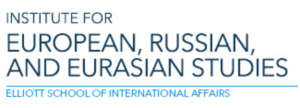In the midst of quarantine, I saw Stagnation (Стагнация) by Bobur Ismailov. The painting shows a lonely girl in a confined room with a book on her knees and the shadow of a black cat on a window against a colorful background. The painting seems to reflect social isolation and time to be alone.
Once Stagnation appeared in social networks, it echoed the sentiments of people from different parts of the world and transcended international borders. Contemporary art from Uzbekistan is different from what we used to see in the respected works of the masters of Soviet realism. Several artists discussed below—Vyacheslav (Yura) Useinov, Bobur Ismoilov, and Anna Ivanova—reflect immediately on everyday life; they are sensitive to the modern era, the contemporaries, and “life during COVID.”
Author

Snejana Atanova
Snezhana Atanova is a PhD candidate at INALCO. Her thesis focuses on nationalism and cultural heritage in Central Asia. She recently finished an IFEAC fellowship devoted to national identity in everyday life in Kyrgyzstan and Turkmenistan. She was awarded a Carnegie fellowship in 2017, in which she explored national identity through the nation-branding initiatives of Russia and Central Asian countries. She earned a Master’s in International Communication from the University of Strasbourg in 2012 and a Master’s from the National Institute of Oriental Languages and Civilizations (INALCO) in 2015.
Vyacheslav (Yura) Useinov
One of the most prominent artists of Uzbekistan, Vyacheslav (Jura) Useinov, participated in a colossal number of international, national, and regional exhibitions. A person of many talents, Useinov composes poetry, writes philosophical essays, creates complex installations of metal and wood, paints pictures, and works with silkscreen painting. In tandem with his spouse Nina Petrosova, the artist experiments in various techniques: tapestry, knitting, threaded iridescent structures, patchwork, and chiy. Useinov’s art makes us think about such burning themes as migration, war and peace, tolerance, and time.
Vyacheslav (Yuri) Useinov was born in 1962 in Fergana. He graduated from Bobruisk Art School and now lives in Tashkent. Since 1992, he has been a member of the Creative Association of the Academy of Arts of Uzbekistan. From 1986 to 2004, he participated in more than 20 international art exhibitions and art projects. You can see more works by Vyacheslav (Yura) Useinov on his personal website, www.useinov.uz


As a reaction to the COVID-19 pandemic, his work entitled Alphabet of mutations of the Uzbek coronavirus shows a hand in a glove, which is imitating the Uzbek ikat. Several hand gestures symbolize socio-political transformations in the country respectively: Coronavirus grab-all, Coronavirus doesn’t give a damn, The hidden fist of the Uzbek Coronavirus, The hollow of lies, A flaming hello to China, The virus has pretended to be a poor relative and just begs to let him home, Coronavirus has taken up the knife… The artist explains:
“Under the Alphabet of the mutation of the Uzbek coronavirus, I meant that human wickedness and malice are much more vicious than any virus; they, like an epidemic, devastate the fabric of social consciousness and the state system.”

The next work, A Gesture of the Baby (2014) is composed of multivariate allegories taken from Christian, Islamic and Buddhist iconography: the elegiac face of Madonna, the holy child and a bird outline, folded wings and fingers, and surah from the Koran in Arabic calligraphy. This eclectic work, by its techniques and its significance, represents another symbol of time: the cultural and religious diversity of the modern world. How will the pandemic affect it?
Bobur Ismoilov
Bobur Ismoilov is an artist and illustrator from Tashkent. His art can be categorized in three groups: paintings, graphics, and drawings. Some art critics believe that Ismoilov’s paintings are touched by surrealism. The artist himself calls them “symbolic narratives.” The artist looks at the current pandemic philosophically:
Two other works were created long before the pandemic, but their significance is particularly relevant in these “COVID-19 days.” My favorite one is called Photo on the memory (Фотография на память). It pictures female figures in burqas with the chachwan lowered, and next to them is a little dog. This silkscreen printing was created in 2016 and was a huge hit in the newly created “Art Bazaar” auction. Two women, fully covered by the burqa as a symbol of humanity, trying to escape from a raging pandemic—just as we all are trying to hide behind the walls of our houses, isolated by our own will or that of others… But can a thin fabric protect us from outside disasters?

“The point is not quarantine itself or isolation, as it even helps to focus, because the world does not interfere; it sleeps. But is it a universal collapse? How can one not see it? What is happening now reminds me of the great Lars Von Trier’s film, Melancholia. There is some pleasure in the disturbing silence. There is also the fear of hopelessness. We’re witnesses to some type of biblical story from the Old Testament.”
Bobur Ismoilov was born in 1973 in Tashkent. He studied at the Benkov Republican Art College from 1987 to 1990 and graduated from the Uyghur State Institute of Arts in 1996. He has been a participant in many international art projects as well as international and national exhibitions. To get acquainted with the works of Babur Ismailov, visit his website: http://baburism.uz/ and his personal Instagram page.
Almost every day on his Facebook page, Ismoilov posts a new painting as a reflection of everyday life. Giving Hazorispand is Ismoilov’s answer to the erupting COVID-19 pandemic. In Central Asia, there was a widespread belief that local herbs such as harmel, known as garmala, isyryk, yuzerlik or hazorispand – ‘grass from a thousand diseases’ –would help protect against the virus both physically by disinfecting the air and symbolically by chasing out evil spirits. Giving Hazorispand symbolizes our hope for healing.


The themes of loneliness, social isolation, slowing down, and stopping time are all reflected by the aforementioned Stagnation as well as the Everyday Still-Life (Житейский натюрморт). A man and a woman are separated by a table on which their entire household routine is piled up. They are separated not only by the space of the table, but by their thoughts and worries. They are deeply alone even if together. A solid wall with a lone radio in the background, like a silent SOS signal, highlights the alienation of the couple. It’s isolation in isolation, isolation squared.
Anna Ivanova
Anna Ivanova was born in 1971 in Tashkent. In 1993, she graduated from the Graphic Arts faculty of the Tashkent State Pedagogical Institute. Anna has participated in a number of international and national exhibitions and projects. Among them: The “East-West” exhibition in Tashkent, the Tashkent Biennale, the “Quebec: le nouvel orientalisme” project in Montreal, “Women’s art workshops “Kitchen” in Moscow, and the “Festival of Islamic Culture” in Almaty. To find more of Anna Ivanova’s works, please visit here page on “Art Bazaar”.

“The quarantine has done little to change my plans, as I used to spend most of my time at home with my painting. However, the whole situation because of the virus is certainly depressing. The recently organized “Art Bazaar” is like a ray of light on such times as COVID. We not only sell our artworks, we chat and discuss a lot; this has become our virtual and transnational art family now.”
This is how the talented Anna Ivanova comments on the time she has spent in quarantine. The artist’s works seem simple and naive in their execution, but this simplicity is so real and literal that its effects are immersive. Anna presented a whole series of works which have been called “quarantine weekdays” at the Tashkent market. In Central Asian cities, the bazaar is the center of life and human interaction; but it is also likely to be a space where people interact too closely and thus may spread the disease. How does one maintain the closeness and intimacy of the bazaars amid the pandemics?


Anna was passionate about “bazaar painting” long before COVID-19, often mixing light and colors on the life of the central bazaar in Tashkent, Chorsu. After discovering a series of drawings by Russian artist Evgeniy Rusak that were devoted to the everyday life of medical doctors, disinfection brigades, and the ordinary citizens at his Telegram-channel “Coronavirus Art”, Anna decided to create her own Chronicles of the Central Asian Bazaar. This work has become a historical record of COVID-19 in Tashkent, one which will be explored by future generations. It is interesting to learn how the pandemic affects the established rhythm of the bazaar and changes its characters; new heroes appear in suits looking like astronauts amid the piles of fruits and vegetables, while sellers and buyers of the bazaar look like strangers in masks and rubber gloves. No more hugs and handshakes! Long queues are lined up for the cheapest and most needed products. The artist scrupulously reflects every detail in her work.
The author expresses her gratitude to all artists for their inspiration and regrets that he was unable to cover the work of every representative of the art community of Uzbekistan. Images of artworks are courtesy of the artists.














